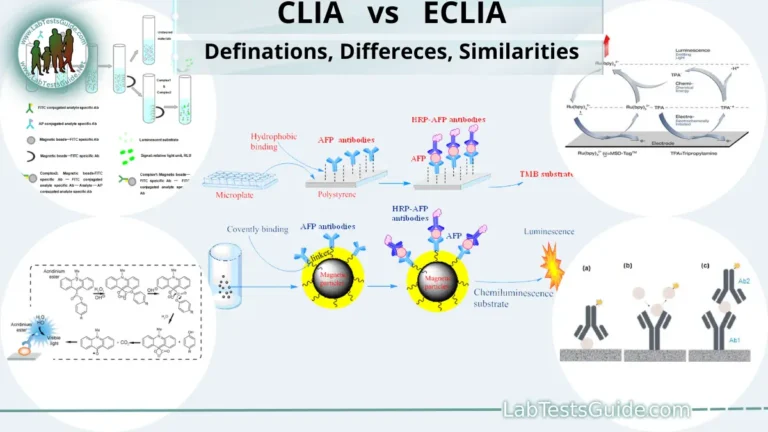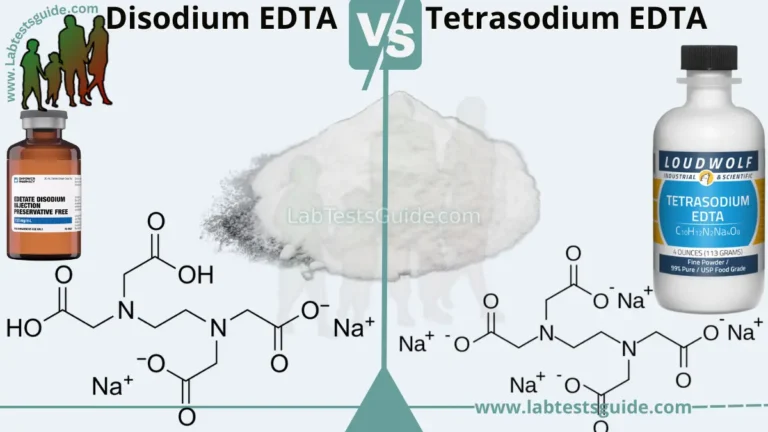Troponin I and Troponin T are both subunits of the troponin protein complex, which plays a critical role in regulating muscle contraction. However, they differ in their structure, function, and clinical significance.

Troponin I is a subunit of the troponin complex that binds to actin, a protein involved in muscle contraction, and helps regulate the interaction between actin and myosin, another protein involved in muscle contraction. Troponin I is specific to cardiac muscle, which means it is only found in the heart, and is released into the bloodstream when there is damage to the heart muscle. Therefore, the level of troponin I in the blood is used as a diagnostic marker for myocardial infarction (heart attack).
On the other hand, Troponin T is another subunit of the troponin complex that binds to tropomyosin, another protein involved in muscle contraction, and helps regulate the interaction between actin and myosin. Unlike Troponin I, Troponin T is found in both cardiac and skeletal muscle, and is also released into the bloodstream when there is damage to the heart muscle. Therefore, the level of troponin T in the blood is also used as a diagnostic marker for myocardial infarction.
In summary, both Troponin I and Troponin T are important diagnostic markers for myocardial infarction, but Troponin I is specific to cardiac muscle, while Troponin T is found in both cardiac and skeletal muscle.
Definations:
Defination of Troponin I:
Troponin I is a subunit of the troponin protein complex, which is involved in regulating muscle contraction. It is specific to the cardiac muscle and is released into the bloodstream when there is damage to the heart muscle. Therefore, the level of troponin I in the blood is used as a diagnostic marker for myocardial infarction (heart attack). Read More>
Defination of Troponin T:
Troponin T is a subunit of the troponin protein complex, which is involved in regulating muscle contraction. It is found in both cardiac and skeletal muscle and is released into the bloodstream when there is damage to the heart muscle. Therefore, the level of troponin T in the blood is used as a diagnostic marker for myocardial infarction (heart attack), but it is less specific to cardiac injury than troponin I. Read More>
Differences Between Troponin I and Troponin T :
Troponin I and Troponin T are both subunits of the troponin complex, which plays a critical role in regulating muscle contraction. However, they differ in several ways, including their structure, function, and clinical significance.
- Structure: Troponin I and Troponin T differ in their amino acid sequence, which determines their three-dimensional structure and function. Troponin I contains a unique amino acid sequence that is specific to the cardiac muscle, while Troponin T contains a different amino acid sequence that is found in both cardiac and skeletal muscle.
- Function: Troponin I and Troponin T have different functions within the troponin complex. Troponin I binds to actin, a protein involved in muscle contraction, and helps regulate the interaction between actin and myosin, another protein involved in muscle contraction. Troponin T binds to tropomyosin, another protein involved in muscle contraction, and helps regulate the interaction between actin and myosin.
- Clinical Significance: Troponin I and Troponin T have different clinical significance. Troponin I is specific to the cardiac muscle, which means it is only found in the heart, and is released into the bloodstream when there is damage to the heart muscle. Therefore, the level of troponin I in the blood is used as a diagnostic marker for myocardial infarction (heart attack). Troponin T is found in both cardiac and skeletal muscle, and is also released into the bloodstream when there is damage to the heart muscle. Therefore, the level of troponin T in the blood is also used as a diagnostic marker for myocardial infarction, but it is less specific to cardiac injury than troponin I.
In summary, Troponin I and Troponin T differ in their amino acid sequence, function, and clinical significance. Troponin I is specific to the cardiac muscle, while Troponin T is found in both cardiac and skeletal muscle. Both are used as diagnostic markers for myocardial infarction, but Troponin I is more specific to cardiac injury than Troponin T.
Table of Differences:
Here is a table summarizing the differences between Troponin I and Troponin T:
| Feature | Troponin I | Troponin T |
|---|---|---|
| Amino Acid Sequence | Unique amino acid sequence specific to cardiac muscle | Different amino acid sequence found in muscle types |
| Function | Binds to actin to regulate muscle contraction | Binds to tropomyosin to regulate muscle contraction |
| Clinical Significance | Specific to cardiac muscle, used as diagnostic marker for myocardial infarction | Found in both cardiac and skeletal muscle, used as diagnostic marker for myocardial infarction but less specific to cardiac injury than troponin I |
Similarities Between Troponin I and Troponin T :
Troponin I and Troponin T have several similarities, including:
- Both are subunits of the troponin protein complex, which plays a critical role in regulating muscle contraction.
- Both are released into the bloodstream when there is damage to the heart muscle and are used as diagnostic markers for myocardial infarction (heart attack).
- Both are highly sensitive and specific markers for detecting heart muscle damage.
- Both have been extensively studied and validated in clinical practice, making them widely used and accepted diagnostic tools for myocardial infarction.
In summary, Troponin I and Troponin T are similar in that they are both subunits of the troponin complex, released into the bloodstream when there is heart muscle damage, and used as diagnostic markers for myocardial infarction. They are both highly sensitive and specific markers and are widely used in clinical practice.
Table of Similarities :
| Criteria | Troponin I | Troponin T |
|---|---|---|
| Subunit of | Troponin complex | Troponin complex |
| Role in muscle contraction | Regulates interaction between myosin and actin | Involved in binding of Troponin I to Troponin complex |
| Use as biomarker | Yes, for various cardiac conditions | Yes, for various cardiac conditions |
| Specificity | Highly specific to cardiac muscle damage | Highly specific to cardiac muscle damage |
| Molecular weight | Smaller, approximately 23 kDa | Larger, approximately 37 kDa |
| Tissue expression | Cardiac muscle, slow-twitch skeletal muscle | Cardiac muscle, fast-twitch skeletal muscle |
Note: This table includes some additional information compared to the previous answer.
FAQs:
What are Troponin T and Troponin I?
Troponin T and Troponin I are subunits of the Troponin complex, which plays a critical role in regulating muscle contraction.
What is the main difference between Troponin T and Troponin I?
The main difference is their location within the Troponin complex and their specific functions in muscle contraction.
What is the role of Troponin T in muscle contraction?
Troponin T is involved in binding Troponin I to the Troponin complex, which helps regulate muscle contraction.
What is the role of Troponin I in muscle contraction?
Troponin I inhibits the interaction between myosin and actin, which is necessary for muscle contraction.
Are there any differences in tissue expression between Troponin T and Troponin I?
Yes, Troponin T is expressed in both cardiac and skeletal muscle, while Troponin I is expressed mainly in cardiac muscle, as well as slow-twitch skeletal muscle.
Are Troponin T and Troponin I used as biomarkers for cardiac conditions?
Yes, both Troponin T and Troponin I are highly specific biomarkers for diagnosing and monitoring various cardiac conditions, including myocardial infarction (heart attack).
Is there a difference in the molecular weight of Troponin T and Troponin I?
Yes, Troponin T has a larger molecular weight of approximately 37 kDa, while Troponin I has a smaller molecular weight of approximately 23 kDa.
Are there any differences in the isoforms of Troponin T and Troponin I?
Yes, both Troponin T and Troponin I have multiple isoforms that can vary between different types of muscle and different disease states.
Is there any difference in the time it takes for Troponin T and Troponin I to rise after a heart attack?
Troponin T tends to rise earlier than Troponin I after a heart attack, but both biomarkers can remain elevated for several days.
Is one biomarker better than the other for diagnosing a heart attack?
Both biomarkers are highly specific and sensitive for diagnosing a heart attack, but Troponin T may have slightly higher sensitivity in the early stages of a heart attack.
Are there any medications or conditions that can affect Troponin T or Troponin I levels?
Yes, certain medications and conditions, such as renal failure or chemotherapy, can affect Troponin T and Troponin I levels, leading to false positives or false negatives in diagnosing cardiac conditions.
Can Troponin T or Troponin I be used to monitor treatment response for cardiac conditions?
Yes, both biomarkers can be used to monitor treatment response and predict outcomes in patients with cardiac conditions.
Can Troponin T or Troponin I levels be elevated in non-cardiac conditions?
Yes, Troponin T and Troponin I can be elevated in some non-cardiac conditions, such as skeletal muscle injury or sepsis, leading to potential misinterpretation of results.
Are there any differences in the normal range of Troponin T and Troponin I levels?
Yes, the normal range of Troponin T and Troponin I levels can vary between different laboratories and assays, and should be interpreted based on the specific method used.
Conclusion:
In conclusion, Troponin T and Troponin I are subunits of the Troponin complex that play critical roles in muscle contraction, and are highly specific biomarkers for diagnosing and monitoring various cardiac conditions. While both biomarkers have similar clinical utility, there are some differences in their location within the Troponin complex, tissue expression, molecular weight, and isoforms. It’s important to be aware of these differences and interpret Troponin T and Troponin I levels based on the specific clinical context and assay used. Additionally, certain medications and conditions can affect Troponin T and Troponin I levels, which should also be taken into account when interpreting results.
Possible References Used







